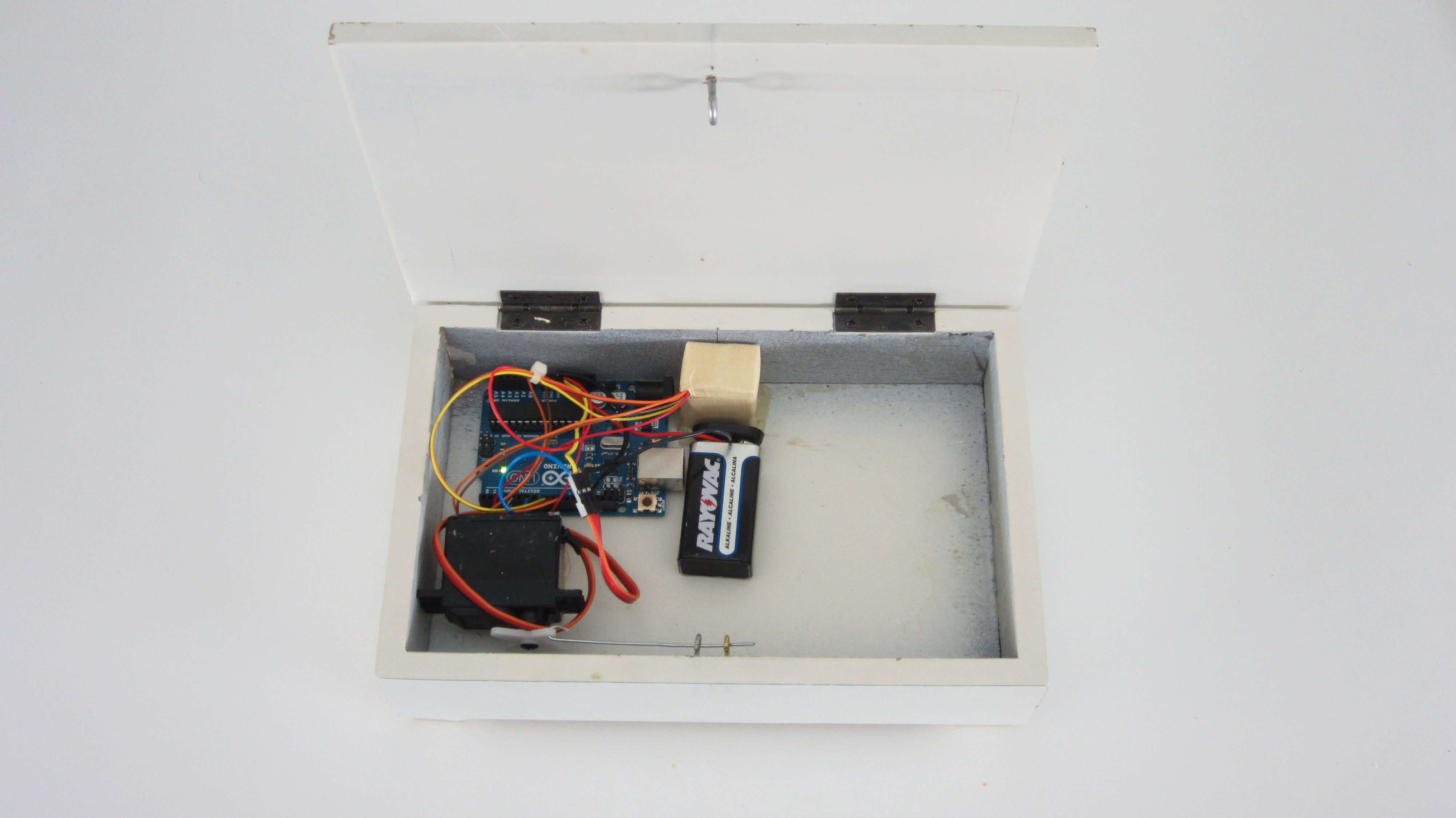//Here is some sample Arduino code that you can use.
//You will need to adjust some of the values to calibrate it to your setup.
#include
Servo myservo; // create servo object to control a servo
int GreenLedPin = 8; // Green LED connected to digital pin 8 int RedLedPin = 9; // Red LED connected to digital pin 9 int BlueLedPin = 10; // Blue LED connected to digital pin 10
int analogPin = 0; // photoresistor connected to analog pin 0 int GreenVal = 0; // variable to store the value of reflected Green light int RedVal = 0; // variable to store the value of reflected Red light int BlueVal = 0; // variable to store the value of reflected Blue light
int GreenRedDifference = 0; int GreenBlueDifference = 0;
int GreenRedLockCode = -31; // lock value int GreenBlueLockCode = 47; // lock value
int sensitivity = 5; // set sensitivity of the color sensor
void setup() { myservo.attach(6); // attaches the servo on pin 6 to the servo object
Serial.begin(9600); // setup serial pinMode(GreenLedPin, OUTPUT); // sets the digital pin as output pinMode(RedLedPin, OUTPUT); // sets the digital pin as output pinMode(BlueLedPin, OUTPUT); // sets the digital pin as output} } void loop() { delay(1000); digitalWrite(GreenLedPin, HIGH); // sets the Green LED off digitalWrite(RedLedPin, HIGH); // sets the Red LED off digitalWrite(BlueLedPin, HIGH); // sets the Blue LED off delay(1000); // waits for a second digitalWrite(GreenLedPin, LOW); // sets the Green LED on delay(100); GreenVal = 1023 – analogRead(analogPin); // read the input pin Serial.println(); Serial.print(“Green “); Serial.println(GreenVal); // debug value delay(1000); // waits for a second digitalWrite(GreenLedPin, HIGH); // sets the Green LED off delay(1000); // waits for a second
digitalWrite(RedLedPin, LOW); // sets the Red LED on delay(100); RedVal = 1023 – analogRead(analogPin); // read the input pin Serial.print(“Red “); Serial.println(RedVal); // debug value delay(1000); // waits for a second digitalWrite(RedLedPin, HIGH); // sets the Red LED off delay(1000); // waits for a second
digitalWrite(BlueLedPin, LOW); // sets the Blue LED on delay(100); BlueVal = 1023 – analogRead(analogPin); // read the input pin Serial.print(“Blue “); Serial.println(BlueVal); // debug value delay(1000); // waits for a second digitalWrite(BlueLedPin, HIGH); // sets the Blue LED off
GreenRedDifference = GreenVal – RedVal; Serial.print(“Green-Red Difference “); Serial.println(GreenRedDifference); // debug value GreenBlueDifference = GreenVal – BlueVal; Serial.print(“Green-Blue Difference “); Serial.println(GreenBlueDifference); // debug value
if((abs(GreenRedLockCode-GreenRedDifference) < sensitivity) && (abs(GreenBlueLockCode-GreenBlueDifference) < sensitivity)) //compare measured color value to code value { Serial.println("Unlock"); // unlock the box myservo.write(45); } else { Serial.println("Lock"); // lock the box myservo.write(135); }
delay(2000); }


